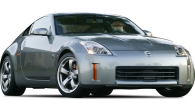Lucy Liang's son wants to buy a used Hyundai Tiburon and she's worried about its quality and any major concerns it might have. She also asks if the servicing and parts cost any more than a regular family car.
NEW
The Tiburon sports coupe was something of a surprise when Hyundai launched it in 2002, it didn't fit with what Hyundai was making at the time. It looked attractive, its lines were smooth and sporty, and its proportions were nicely balanced.
The front-wheel drive Tiburon wasn't a hard-edged sports car; it was more a pleasant cruiser meant to appeal to the same people who reckoned the Toyota Celica was sporty. Hyundai's idea was simple. Take a competent mechanical package and wrap it in some sexy sheetmetal and you have an affordable and appealing coupe.
When first launched Tiburon buyers could choose between a 2.0-litre four-cylinder engine that delivered a modest punch of 102 kW and 181 Nm and a more menacing V6 that promised 127 kW and 245 Nm. The V6 was the one to go for; it was smooth and responsive and was a pleasant drive. At the same time it had enough grunt to get up and go if that's what you wanted.
There was a choice of manual and automatic transmissions. The four-banger, which dropped out of the range in 2004 leaving the V6 as the only choice, came with a five-speed manual, while the V6 had a six-speeder. Both could be had with the automatic. On the road the Tiburon handled quite well, displaying decent grip when pressed, while also riding comfortably, something not all sports car could boast.
Step inside the cabin and you found yourself in a sporty environment that nicely complemented the go-fast exterior.
NOW
Hyundai's quality was ordinary to say the least when the brand first appeared in our showrooms, but it has come on leaps and bounds in the last few years. For that reason it's best to buy the latest model that fits your budget to take advantage of the improvement.
The good news for Lucy Liang is that the Tiburon is no pricier to service, or to buy replacement parts for as any other Hyundai, and that means they're quite affordable. In terms of major issues she can rest easy there as well, as there are no major problems to be concerned about. That doesn't mean that things don't go wrong with the Tiburon. Like all cars, no matter the brand or price tag, things do fail.
It's worth keeping in mind that the Tiburon was first introduced in 2002, so the earliest examples are 12 years old, and even the last are four years old, and that means they're getting on in age and the likelihood of problems occurring is increasing with the passing of each year.
It's important then to buy the car that is in the best condition, one that has been regularly serviced, and well looked after. The body should be clean, without bumps and scrapes, the paint should not be fading, nor should the clear coat be peeling, the interior should also be clean and tidy, with little or no wear on the seats or the carpets.
Check the service record to confirm the car's servicing. Regular servicing, with regular oil changes, is crucial to ensuring a car's reliability over the long term. The cam timing belt needs to be changed at 100,000 km intervals, so check that it has on any car that's passed that milestone.
A thorough test drive is essential to make sure the car you're considering runs at its best. The engine should be smooth, it should rev without hesitation, and there should be no misfiring, rough running or surging.
The automatic transmission should engage gears smoothly and without hesitation. If it doesn't it's probably best to bypass the car. While Hyundai's build quality has improved significantly it's still worthwhile running through all of the accessory systems to make sure they work. Early Hyundais were renowned for having dodgy electrics, that shouldn't apply to the Tiburon, particularly later ones, but it's better to be safe than sorry.
There has been one recall affecting the Tiburon. That was in 2003 and affected early models. It was an important one; the brake pipes were at risk of rubbing against the front sub-frame leading to the loss of brake fluid and ultimately the loss of braking. Check that the recall has been done, talk to a dealer if you're not sure.
Hyundai Tiburon 2002:
| Engine Type | Inline 4, 2.0L |
|---|---|
| Fuel Type | Unleaded Petrol |
| Fuel Efficiency | 9.5L/100km (combined) |
| Seating | 5 |
| Price From | $2,750 - $4,290 |
Verdict
SMITHY SAYS
Has the looks, lacks the performance, but price is right.
Hyundai Tiburon 2002-2010
Price new: $38,380 to $42,880
Engine: 2.0-litre 4-cyl, 102kW/181 Nm; 2.7-litre V6, 127 kW/245 Nm
Transmission: 4-speed auto, 5-speed man, 6-speed man, FWD
Economy: 7.2 L/100 km (2.0), 9.0 L/100 km (V6)
Body: 2-door coupe
Variants: Tiburon, Tiburon V6, Tiburon V6 TS
Safety: ABS braking, front airbags, electronic stability control (from 2007).
Expect to pay:
Tiburon 4-cyl – $3500-$6000.
Tiburon V6 – $4500-$14,000.
Tiburon V6 TS – $7000-$12,000.
Range and Specs
| Vehicle | Specs | Price* |
|---|---|---|
| V6 | 2.7L, Unleaded Petrol, 4 SPEED AUTO SELECTRONIC | $4,730 - $6,930 |
| V6 | 2.7L, Unleaded Petrol, 6 SPEED MANUAL | $4,510 - $6,600 |











.jpg)

.jpg)












.jpg)
Comments